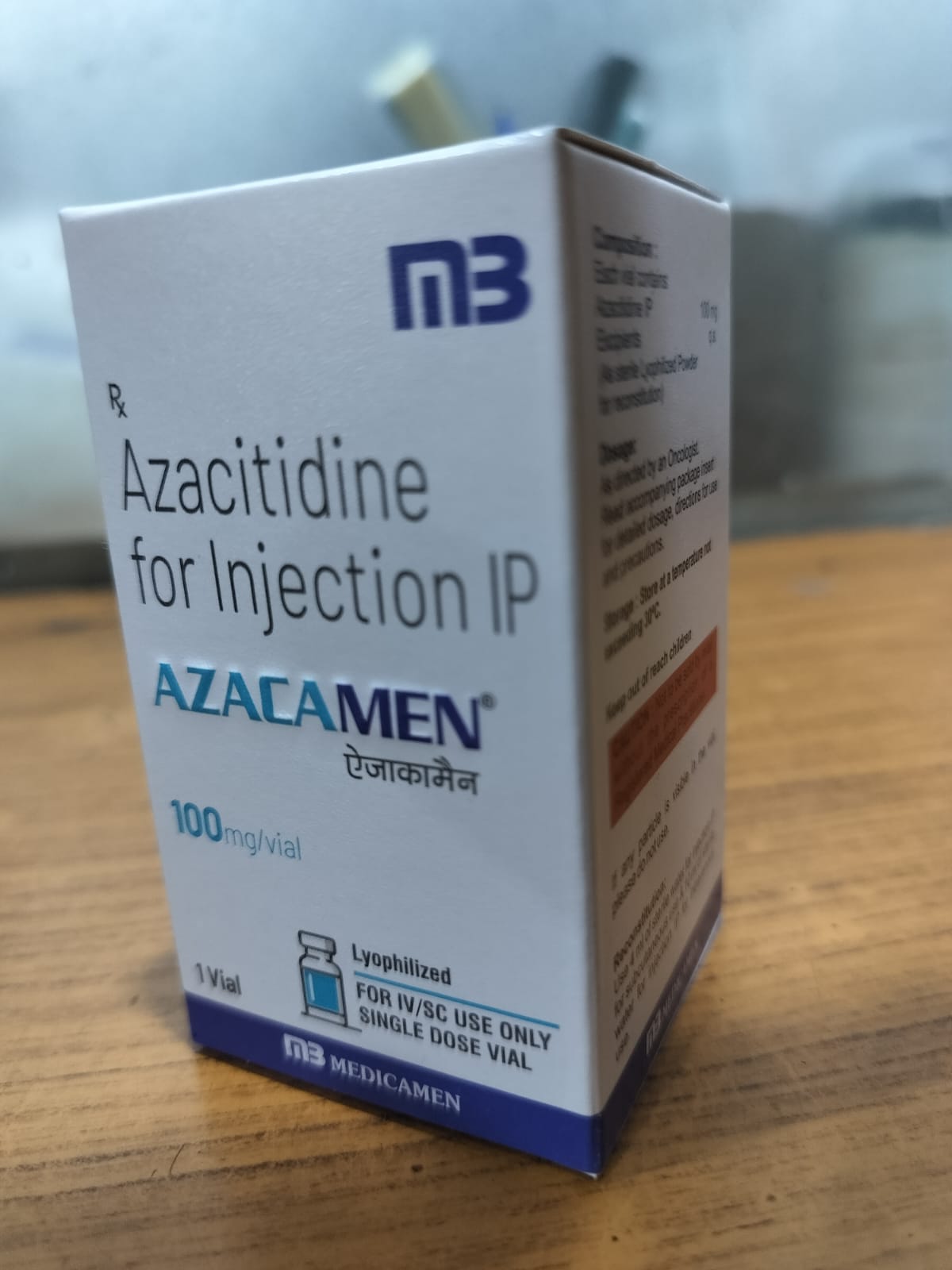Product Intro:
Gliogrey is a sterile lyophilized powder for intravenous injection, available in 20 mg and 250 mg vials. It is primarily used in neuro-oncology protocols, either alone or in combination with radiotherapy, as a first-line or adjuvant chemotherapy in malignant brain tumors.
Uses (Indications):
Temozolomide is specifically designed for the treatment of aggressive brain tumors:
-
Glioblastoma Multiforme (GBM) – newly diagnosed, in combination with radiotherapy and as maintenance monotherapy
-
Anaplastic Astrocytoma – recurrent or progressive cases after standard therapy failure
-
Malignant Gliomas – including mixed oligoastrocytomas
-
Metastatic Brain Lesions – in some off-label or investigational settings
-
Melanoma (off-label) – when metastasized to the brain or CNS
-
Other CNS tumors (investigational) – such as medulloblastoma, oligodendroglioma
Storage Instructions:
-
Store the vials at 20°C to 25°C (room temperature)
-
Protect from light, moisture, and heat
-
After reconstitution, use immediately or within 1 hour if stored at 2–8°C
-
Do not freeze
-
Store in a secure cytotoxic drug cabinet with proper labeling and PPE protocols
How It Works (Mechanism of Action):
Temozolomide is a DNA-alkylating agent. Once administered, it undergoes spontaneous conversion to MTIC (monomethyl triazeno imidazole carboxamide), its active metabolite.
-
MTIC alkylates/methylates DNA at the O6 and N7 positions of guanine, leading to DNA strand breaks
-
This causes mismatch repair, triggering apoptosis (programmed cell death) in rapidly dividing tumor cells
-
It crosses the blood-brain barrier effectively, making it ideal for CNS malignancies
Side Effects:
Common Side Effects:
-
Nausea and vomiting
-
Fatigue and drowsiness
-
Constipation or diarrhea
-
Loss of appetite
-
Headache
-
Alopecia (hair loss)
Serious Side Effects:
-
Severe myelosuppression – especially neutropenia and thrombocytopenia
-
Pneumocystis jirovecii pneumonia (PJP) – especially in patients on long courses or with steroids
-
Hepatotoxicity – elevated liver enzymes or liver failure
-
Seizures or worsening neurological status
-
Hypersensitivity reactions – including rash, swelling, or anaphylaxis
-
Secondary malignancies – such as myelodysplastic syndrome or leukemia (rare, long-term)
Dosage (Typical Recommended Dose):
Newly Diagnosed Glioblastoma Multiforme:
-
Concurrent with radiotherapy: 75 mg/m² daily for 42 days with radiotherapy
-
Maintenance phase: 150–200 mg/m² once daily for 5 days every 28 days (starting 4 weeks post-radiation)
Recurrent Anaplastic Astrocytoma:
-
150 mg/m² once daily for 5 consecutive days every 28-day cycle
-
Dose may be escalated to 200 mg/m² if well tolerated
Note: Dose adjustments are based on hematologic recovery and liver function.
Method of Administration:
-
Reconstitute the powder using sterile water for injection under aseptic conditions
-
Administer via intravenous infusion over 90 minutes
-
Do not administer as a bolus or push
-
Requires special handling precautions due to cytotoxicity
-
Can also be used in oral form; IV use is reserved for patients unable to take oral medication
Precautions:
-
Monitor CBC, renal, and liver function before each cycle
-
Prophylactic antibiotics (e.g., trimethoprim-sulfamethoxazole) may be required to prevent PJP
-
Avoid use in pregnancy (Category D) – may cause fetal harm
-
Use contraception during and for at least 6 months (females) and 3 months (males) after treatment
-
Avoid use with immunosuppressive agents unless essential
-
Monitor for signs of neurotoxicity or cognitive decline
Drug Interactions:
-
Corticosteroids (e.g., dexamethasone): May increase risk of infection or immunosuppression
-
Antiepileptics (e.g., phenytoin, valproate): May alter seizure threshold or drug levels
-
Myelosuppressive agents: Additive risk of bone marrow toxicity
-
Live vaccines: Contraindicated during and after treatment due to immunosuppression
-
Hepatotoxic drugs: Increase risk of liver enzyme elevations
Allergies (Warnings for Allergic Reactions):
-
Avoid use in patients with known hypersensitivity to temozolomide or dacarbazine (DTIC)
-
Monitor for signs of angioedema, rash, urticaria, or anaphylaxis
-
In case of severe reaction, discontinue immediately and initiate emergency treatment
Overdose Information:
-
Symptoms include severe myelosuppression, mucositis, seizures, and risk of infection
-
There is no specific antidote for temozolomide overdose
-
Management is supportive, including transfusions, antibiotics, hydration, and close monitoring
-
Hospitalization may be required for aggressive supportive care
Missed Dose Instructions:
-
If a dose is missed, consult the oncology team immediately
-
Do not double up or take extra doses without physician approval
-
Dosing schedules are strictly managed under medical supervision during chemotherapy cycles
Additional Notes:
-
Temozolomide is teratogenic and mutagenic – handle with PPE and dispose safely
-
Regular MRI and imaging may be required to assess tumor response
-
Patients may need psychological and nutritional support due to the neuro-oncologic burden
-
Avoid alcohol and tobacco during treatment due to interaction and toxicity risks
-
Adherence to infection control measures is essential due to bone marrow suppression



